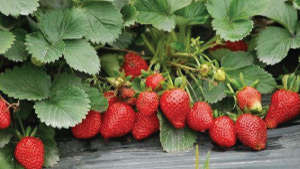
Advisory ArticleAgro Sandesh
Know Important Strawberry Cultivation Practices
Strawberry can be grown effectively in temperate regions; only one crop can be grown in plains in winter. In October-November crops are planted from temperate regions and the fruits are ready in February-March. The strawberry beds are covered with plastic sheets from December to February, which helps their fruits grow rapidly and also increases their output by 20%.
Strawberries can be harvested for three consecutive years once planted as the soil dries well and receives monsoon rains throughout the year as an area such as Mahabaleshwar in Maharashtra experiences freezing conditions throughout the year. The scenario in Gujarat is quite the reverse as strawberries have to be cultivated around key areas such as Ahmedabad, Vadodara, Surat or Rajkot to get good fruit prices.
Cultivation:
Strawberries can be sown by seed and plant runners; new plants growing on plants are called runners. To obtain early production and produce good quality fruit, a runner must be planted. One can also transplant plants prepared from the tissue culture.
From the second fortnight of September to the first fortnight of October, strawberries should be planted. This planting should take place at a range of 30/30 cm or 60/60 cm. Plant the original portion of the erosion as soon as it is pressed into the soil. The soil should, therefore, be well supplied with moisture, and hoeing should be performed lightly, and weed-free young planting should be maintained.
Fertiliser and Irrigation:
The need for functional irrigation depends more on the type of soil and climate. In general, run the drip system every day for 40 minutes in October-November (20 minutes in the morning and 20 minutes in the evening). As per the crop requirement, this time may also be increased or decreased. Because of the nature of fast fruit production, strawberries require more fertiliser. Two kg of cow dung and 20 grams of DAP are mixed per square meter in the prepared bed. Any soluble fertiliser, which can supply nitrogen phosphorus, potash and micronutrients, is then provided every week through the drip system along with irrigation. Nitrogen, phosphorus, and potash are generally given 50:25:35 kg per acre through drip irrigation.
Source: Agro Sandesh
If you find this information useful, click on the yellow thumbs up sign under the photo and also share this with your farmer friends using the options given below.
162
1

